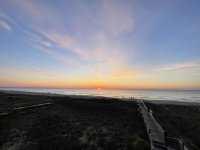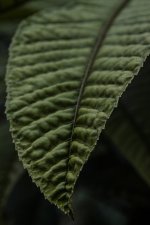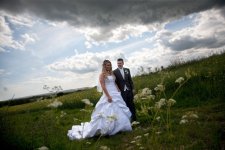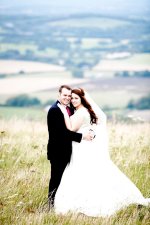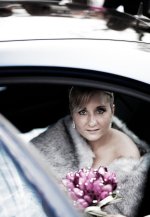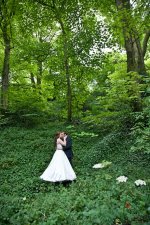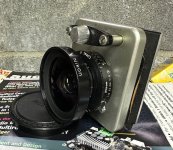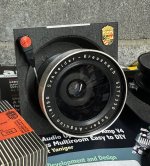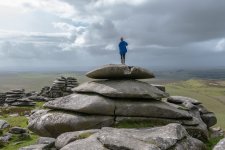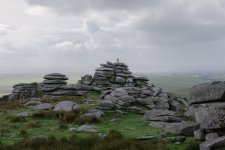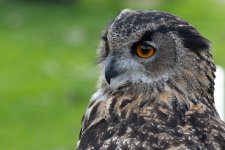A study of Bokeh of various lenses.
I got some interesting historical lenses from a friend today and he said these have particularly good bokeh. I set up a quick test with some point light sources in the background in order to study the way a point source that is out of focus gets imaged.
The lenses will be compared to a Lumix 20mm F/1.7 Aspheric (standard large aperture lens on M43) and the Kamlan 50mm F/1.1 manual focus which I recently bought. I also have a Nikkor 50mm F/1.2 AIS from my Nikon system and will be using a Nikon F-mount to M43 adapter for the other historical lenses: a Zeiss Jena Biotar 58mm F/2.0 and a Pentax Takumar 35mm F/2.3.
These were all handheld shots at ISO 1600 with shutter speeds in the 1/400 to 1/800 sec to ensure sharpness despite being handheld, lens apertures were wide open and I was about 6 ft away from the fireground subject (Phalaenopses orchids),
Baseline Lumix 20mm F/1.7:

Kamlan 50mm F/1.1:

Nikkor 50mm F/1.2:

Biotar 58mm F/2.0:

Takumar 35mm F/2.3:

I can see why people say the Biotar has interesting bokeh - it looks like bubbles. I think I saw a modern "bubble lens" on Aliexpress. The Takumar is also similar and has an asymmetric bokeh the farther away from the center of the image you go. The modern Kamlan by contrast, has a uniform bokeh spot that will result in creamy and smooth out of focus background blur, but not very interesting. The Nikkor 50mm F/1.2 is an older formula from 1981 before full blown computer lens design software was available, and it has a slight enhanced bubble edge on the bokeh spots from a point light source - a bit more interesting. The 50mm F/1.2 has the distinction of being the sharpest 50mm Nikon makes at F/2.0 - even sharper than the modern 50mm F/1.4D (according to Ken Rockwell). The modern Lumix 20mm M43 lens, has more depth of field due to its shorted FL but overall, can be seen to be extremely sharp.
I got some interesting historical lenses from a friend today and he said these have particularly good bokeh. I set up a quick test with some point light sources in the background in order to study the way a point source that is out of focus gets imaged.
The lenses will be compared to a Lumix 20mm F/1.7 Aspheric (standard large aperture lens on M43) and the Kamlan 50mm F/1.1 manual focus which I recently bought. I also have a Nikkor 50mm F/1.2 AIS from my Nikon system and will be using a Nikon F-mount to M43 adapter for the other historical lenses: a Zeiss Jena Biotar 58mm F/2.0 and a Pentax Takumar 35mm F/2.3.
These were all handheld shots at ISO 1600 with shutter speeds in the 1/400 to 1/800 sec to ensure sharpness despite being handheld, lens apertures were wide open and I was about 6 ft away from the fireground subject (Phalaenopses orchids),
Baseline Lumix 20mm F/1.7:
Kamlan 50mm F/1.1:
Nikkor 50mm F/1.2:
Biotar 58mm F/2.0:
Takumar 35mm F/2.3:
I can see why people say the Biotar has interesting bokeh - it looks like bubbles. I think I saw a modern "bubble lens" on Aliexpress. The Takumar is also similar and has an asymmetric bokeh the farther away from the center of the image you go. The modern Kamlan by contrast, has a uniform bokeh spot that will result in creamy and smooth out of focus background blur, but not very interesting. The Nikkor 50mm F/1.2 is an older formula from 1981 before full blown computer lens design software was available, and it has a slight enhanced bubble edge on the bokeh spots from a point light source - a bit more interesting. The 50mm F/1.2 has the distinction of being the sharpest 50mm Nikon makes at F/2.0 - even sharper than the modern 50mm F/1.4D (according to Ken Rockwell). The modern Lumix 20mm M43 lens, has more depth of field due to its shorted FL but overall, can be seen to be extremely sharp.
Last edited:
A near perfect lens according to this reviewer. 35mm F/0.95 for $190. Sharp and low distortion and no chromatic aberration.
Nice! I think my Canon G16 could take a similar photo on its Night Scene mode (and using image stabilization).
You're encouraging me to explore my phone's photo taking capabilities. I only ever use it for basic snapshots. I have no idea if it can do anything special (an iPhone 13). I'm not much of a phone geek...
You're encouraging me to explore my phone's photo taking capabilities. I only ever use it for basic snapshots. I have no idea if it can do anything special (an iPhone 13). I'm not much of a phone geek...
I had an sd Quattro for some years. Only moved on due to terrible iso performance. (iso400 was bad). However I loved the colour and detail available. This shot shows the Foveon green abilityAnyone with Foveon experience/opinion? Or 3D?
Attachments
At night smartphones usually take multiple short exposures and combine them "smartly" compensating for eventual shaking. Similar to mutiple exposure astro-photography it allows incredible shots!This was 3 seconds but info says 1/5 second.
Maybe the net exposure time was 1/5?
My first proper DSLR was the Canon 5D. Here’s a few wedding pics from when I was just starting out
Attachments
Last edited:
At night smartphones usually take multiple short exposures and combine them "smartly" compensating for eventual shaking. Similar to mutiple exposure astro-photography it allows incredible shots!
Maybe the net exposure time was 1/5?
Coincidentally, that's what my G16 does. I can't remember how many it takes, but I think it's only three - but it works surprisingly well.
Last edited:
I think you are right. Otherwise, how blurr and streaking from bright spots might be an issue. Also, CMOS sensors have terrible dark noise for longer exposures. There is definitely some AI post processing going on in the phone though to make these images possible.At night smartphones usually take multiple short exposures and combine them "smartly" compensating for eventual shaking. Similar to mutiple exposure astro-photography it allows incredible shots!
Maybe the net exposure time was 1/5?
Some basics info about lenses.
https://fstoppers.com/gear/superior-way-can-compare-camera-lenses-662285
https://fstoppers.com/gear/superior-way-can-compare-camera-lenses-662285
Last edited by a moderator:
Nice! Legendary view camera lenses!
I need to make a 3D printed DIY view camera with a small sensor and “large” 35mm full frame lens Nikon F mount lens.
I need to make a 3D printed DIY view camera with a small sensor and “large” 35mm full frame lens Nikon F mount lens.
I took this one on Thailand (Koh Samui) 2012.

This was in Durness, Scotland. No tripod, just with the anti-shake active - unfortunately, it didn't quite stop the moon from blurring a bit!

This was in Durness, Scotland. No tripod, just with the anti-shake active - unfortunately, it didn't quite stop the moon from blurring a bit!
I was at the 85% totality path for the eclipse event yesterday. This is iPhone 12 with eclipse glasses filter over the lens. Digital zoom way out to 600% and image stabilization active.

Pinhole images through a colander and shadows of cherry tree leaves above us gave interesting crescent shaped shadow bokeh.

Pinhole images through a colander and shadows of cherry tree leaves above us gave interesting crescent shaped shadow bokeh.
